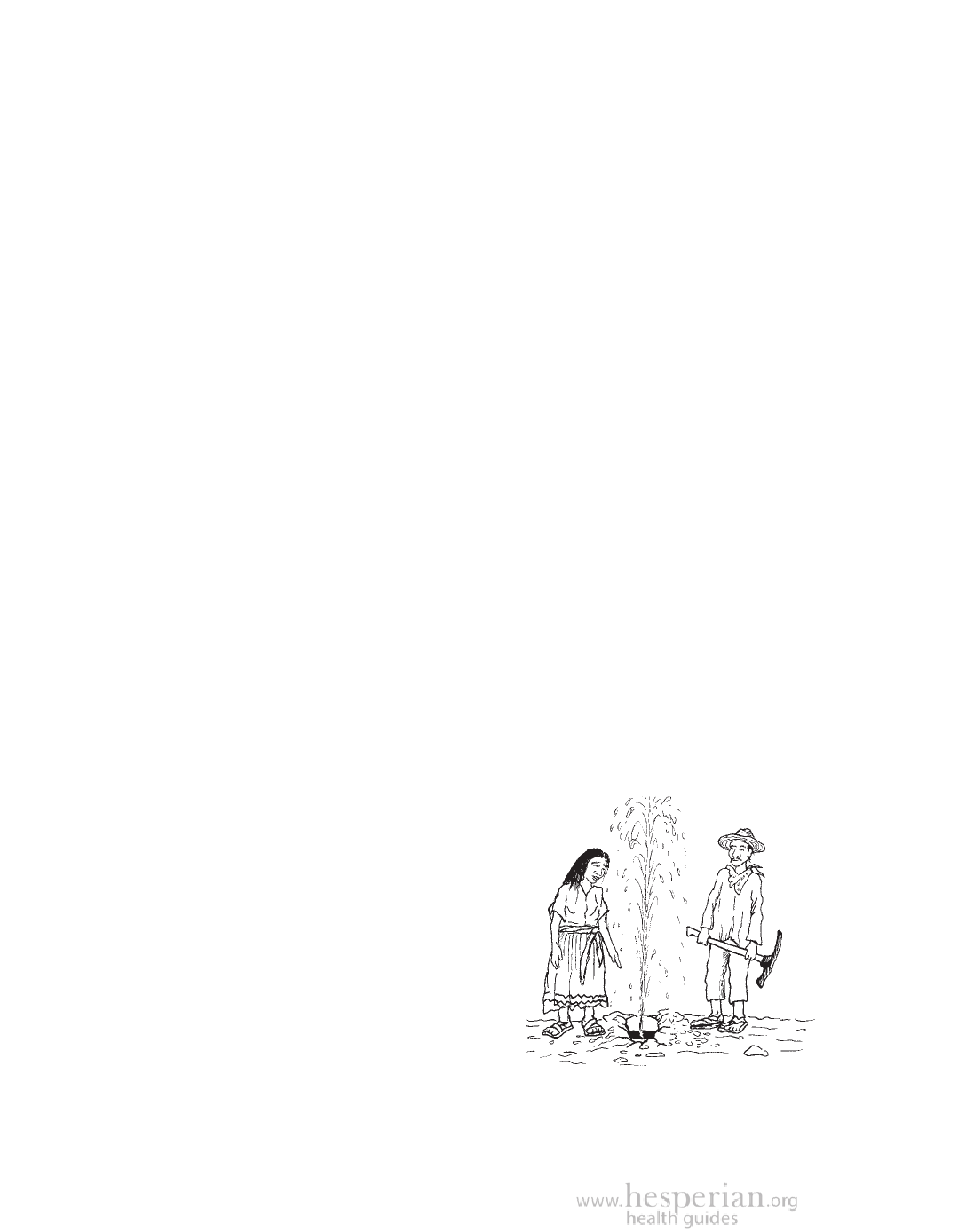
88 Protec ting Communit y Water
Safe Water Transport
Care must be taken to keep water safe and clean while it is being moved from
its source to where people need it. Carrying water is some of the hardest
daily work done in any community, and it is often done by women and girls.
Carrying heavy loads of water on the head, on the back, or with a head strap
can lead to frequent headaches, backache, harm to the spine, and can cause a
pregnant woman to lose her baby due to strain.
Water improvement projects can reduce this burden. Sometimes simple
changes can make it easier to carry water. Water systems can be built so
there will be no need to carry water long distances. And homes can be built
closer to the water source. Community health will improve if men understand
the importance of this work in family life and share the tasks of collecting and
carrying water.
Piped water
There are many advantages to a piped water system. Piped water reduces the
risk of contamination and there are fewer places for snails and mosquitoes
to live. However, a piped water system that is poorly built and used unsafely
may make water contamination worse than no system at all. A piped water
system must be planned carefully, with an understanding of how much water
is needed and available now, and how much water may be needed in the future
as your community grows.
Water can be piped from almost any water source, but springs and
reservoirs are the most common. The least costly source is one that is uphill
from the community, so that gravity will carry the water downhill. Most
piped water systems bring the water to a large storage tank. The tank may be
treated with chlorine or have a filter attached to
treat the water. Water is then piped from the
storage tank to taps in people’s homes or to
public water taps around the community.
A piped water system needs regular
maintenance. Keeping records of where
pipes are laid can prevent accidents
and make it easier to find and repair
broken pipes. Leaking pipes can waste a
lot of water, draw in sewage and other
contamination from the soil, and make
breeding grounds for mosquitoes and
snails. If pipes have been fixed with jute,
hemp, cotton, or leather, germs may
grow on these things and contaminate
the water inside the pipes.
An important part of any piped water
system is making sure that someone is
responsible for fixing damage to the pipes.
A Community Guide to Environmental Health 2012